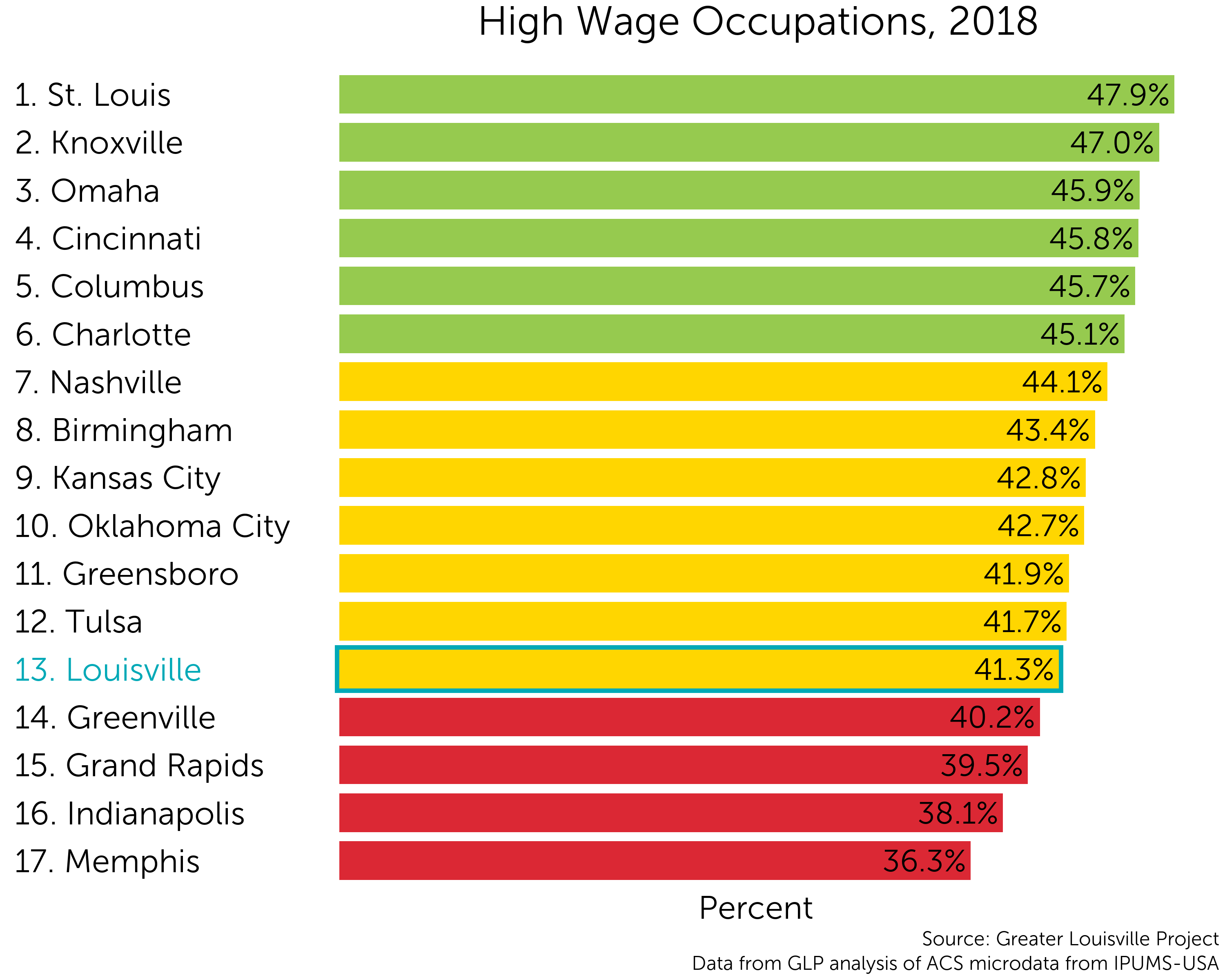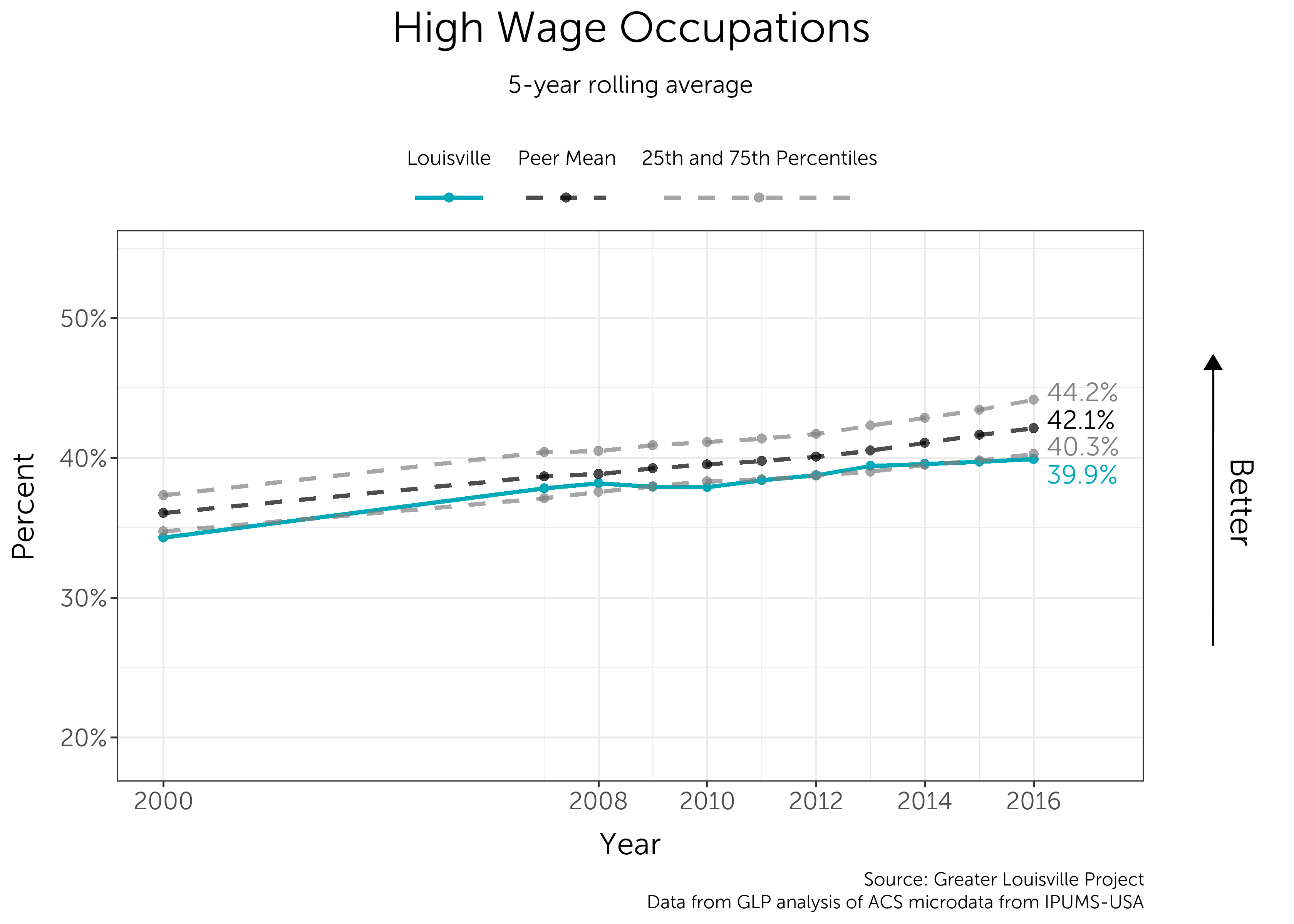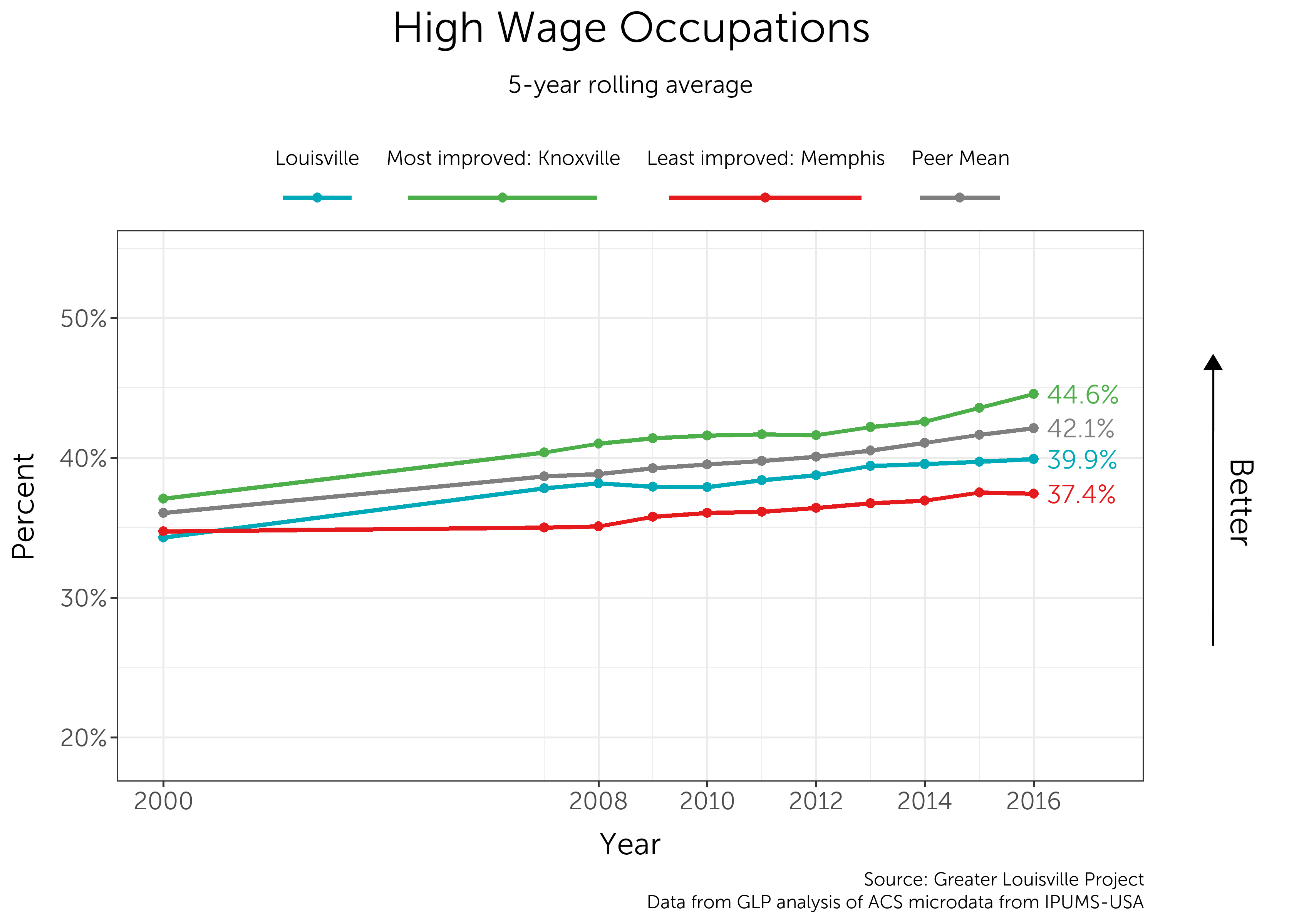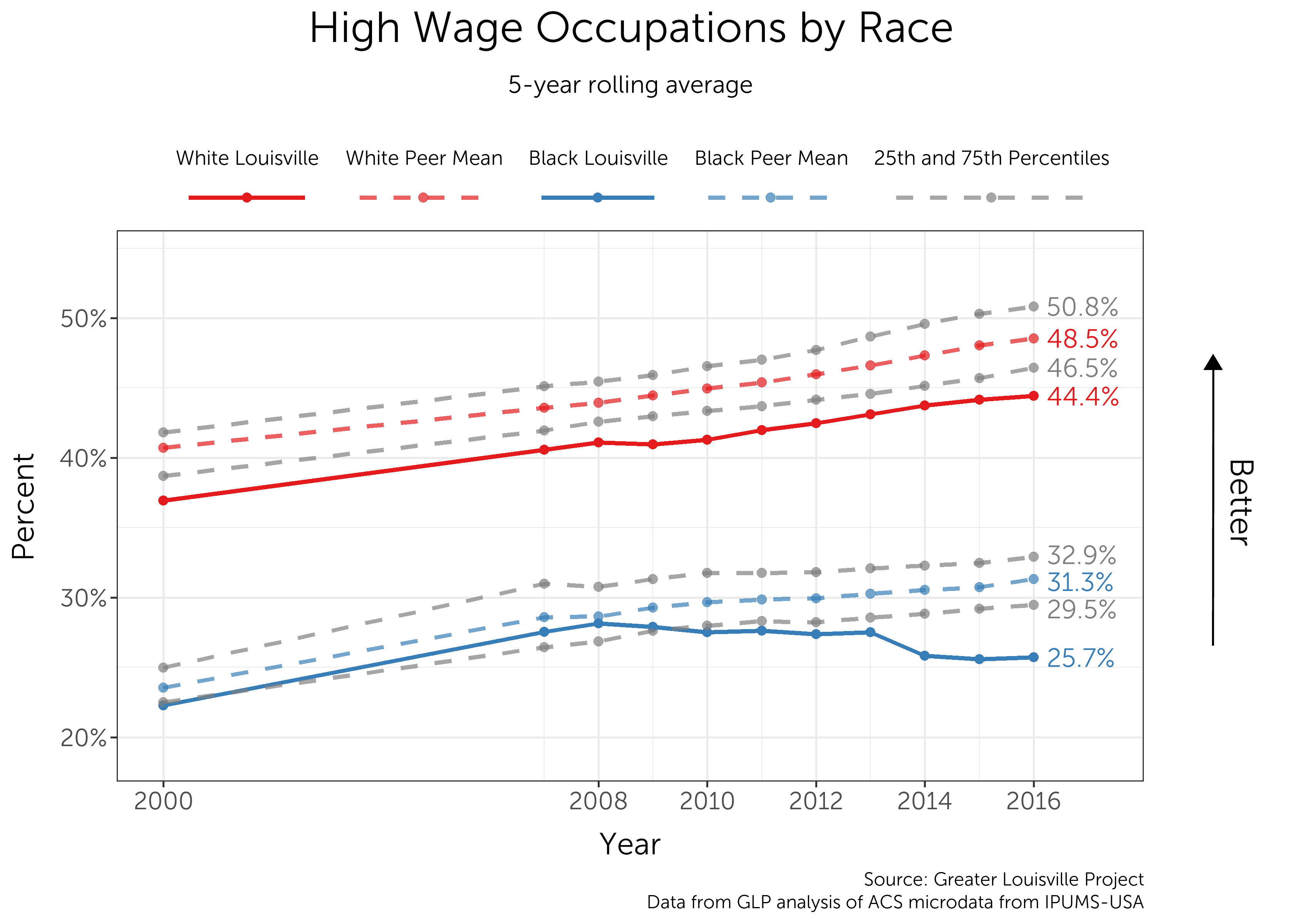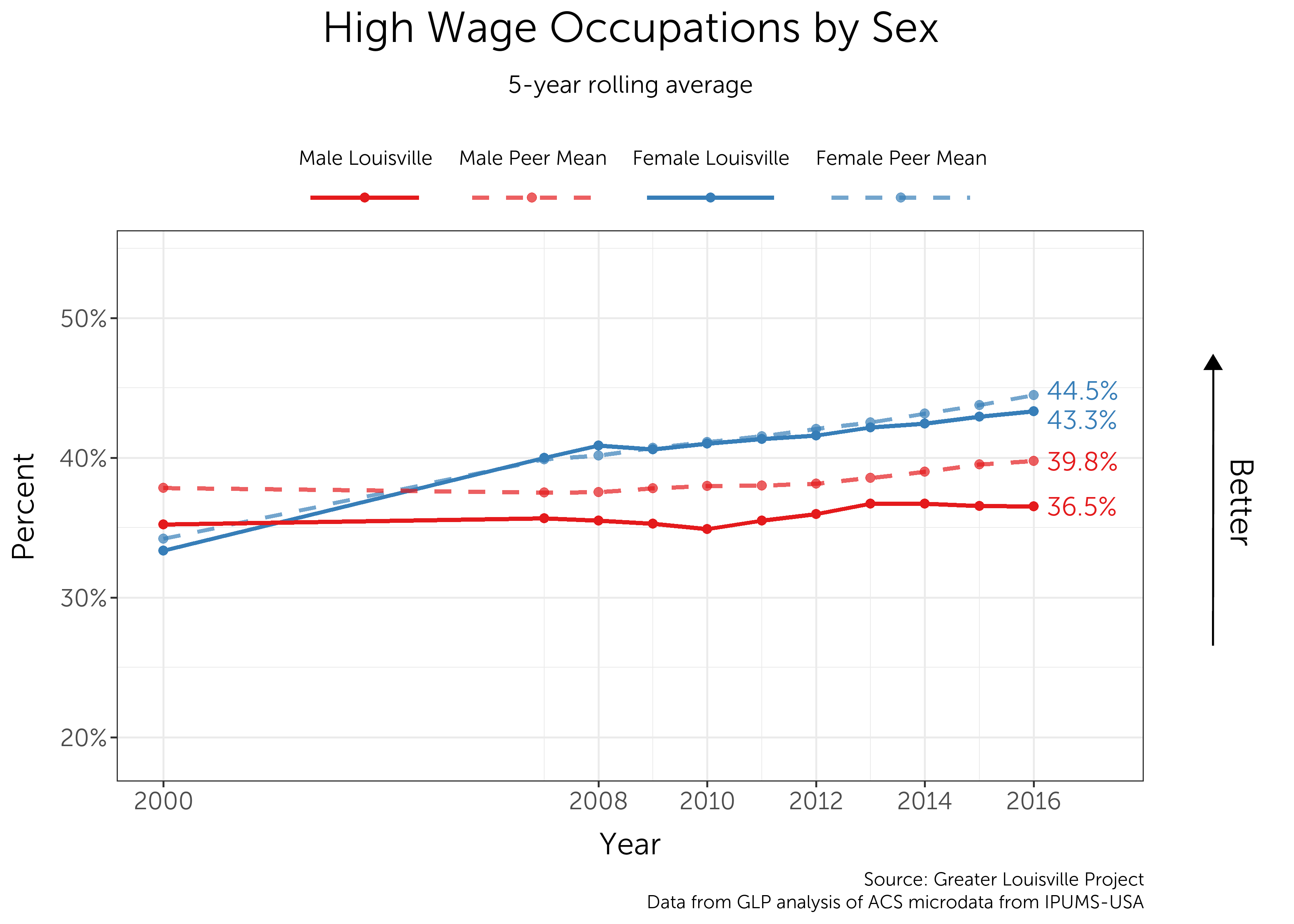Population in High Wage Occupations
Louisville’s economic development efforts should focus the quality of jobs created, not just the quantity. Emphasizing job growth in high-wage sectors will help more families achieve financial stability and reinvest their expendable income into the community. Additionally, the percentage of high wage jobs is an important factor for individuals who are considering moving to Louisville and joining the workforce.


